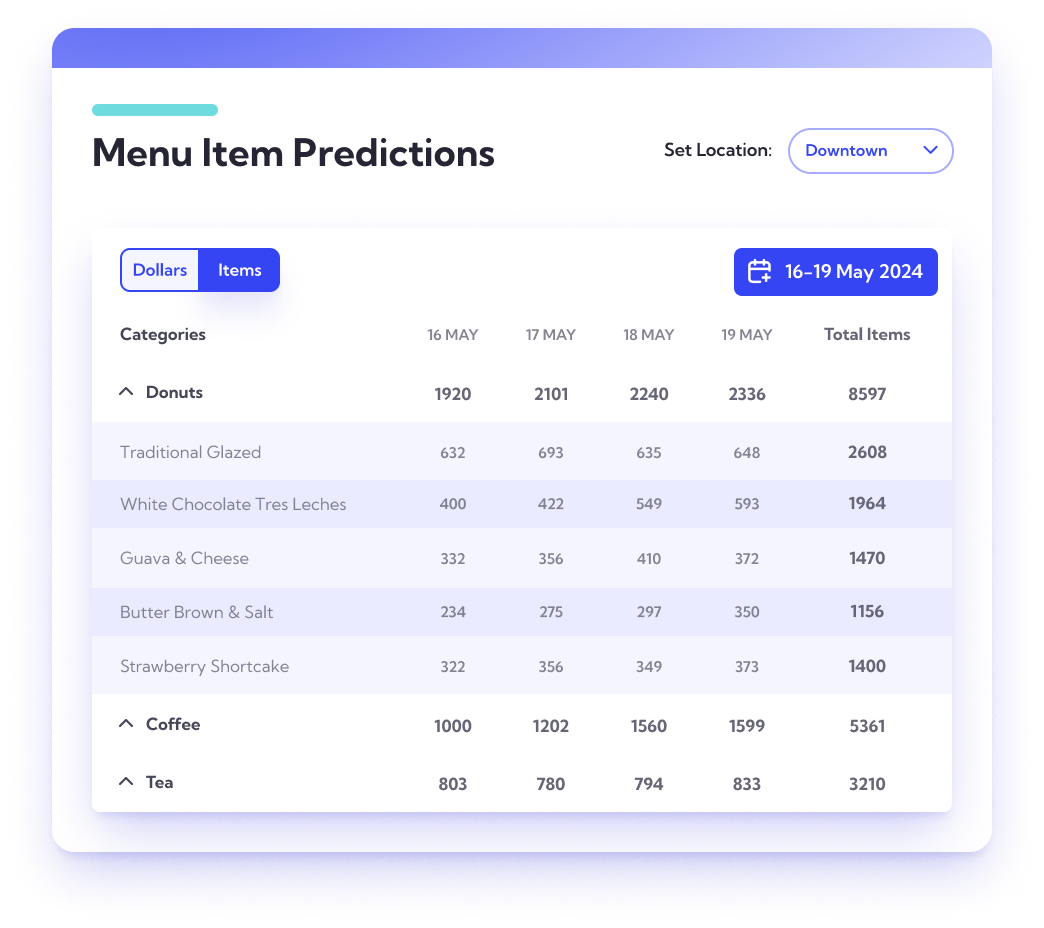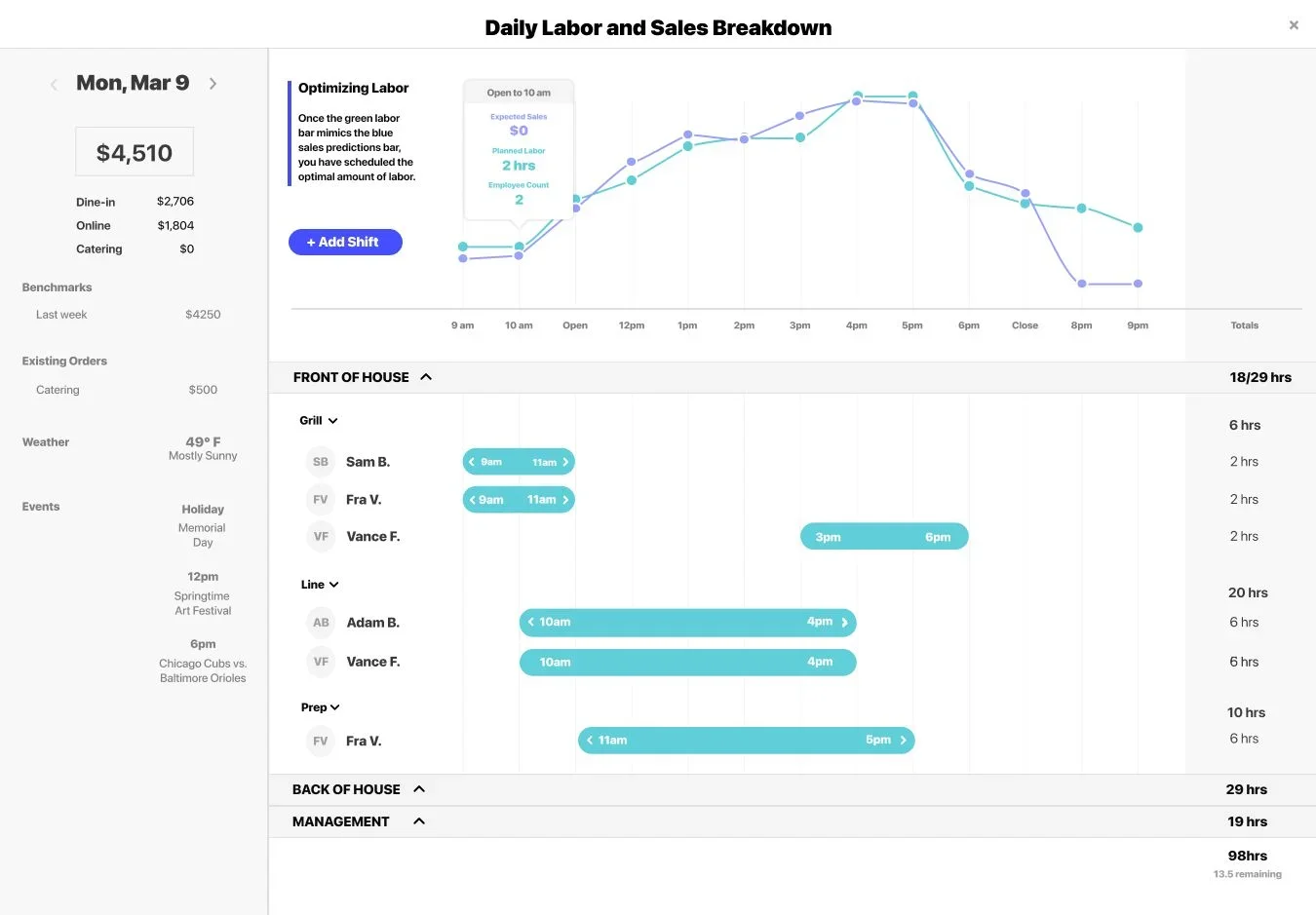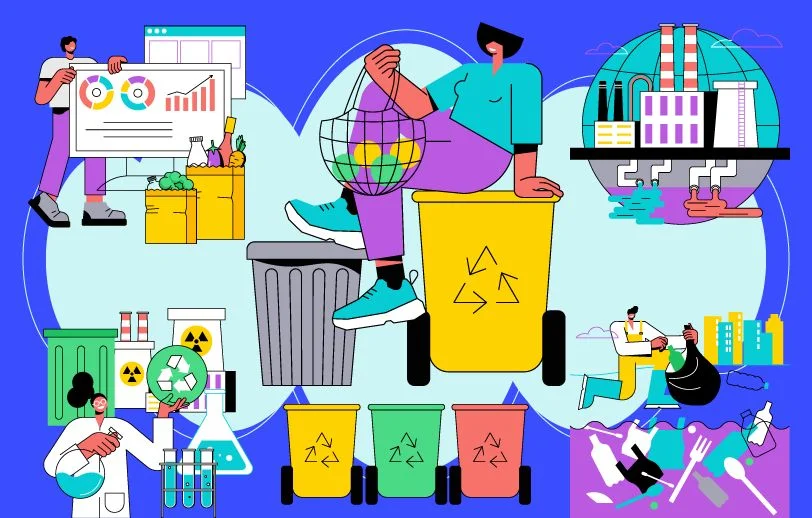Food waste is a widespread issue that plagues the restaurant sector. Profit margins are already very tight in restaurants, and food costs tend to be a huge part, if not the majority, of the budget. Experts estimate that restaurants waste between 4% to 10% of their food each year – for every $100,000 you spend on food, you could be losing up to $10,000. For most restaurants, that represents a significant portion of their profits.
Reducing food waste doesn’t just save money, the repercussions extend far beyond the boundaries of the kitchen. Sustainability has been a major topic across all industries in recent years, and the EPA states that there is more food waste than any other material in US landfills and incinerators. A reduction in food waste can also help combat food insecurity, which is a growing concern in many communities across the country.
It makes sense to reduce food waste from social, environmental, and business standpoints. It’s a tremendous opportunity to do the right thing while also contributing to the financial health of your restaurant. In this article, we take an in-depth look at how to deal with food waste in restaurants and also offer a free, downloadable food waste log template.
Understanding Food Waste
The first step to reducing food waste is understanding where it comes from. Food waste refers to the discarding of food that could have been consumed but instead ends up in the garbage. This can occur at various stages of the food supply chain, but in restaurants, it often happens during preparation or at the end of a meal when customers leave uneaten food.
Studies have shown that up to 10% of food purchased by restaurants never even makes it to customers.
Take a look at the main causes of food waste in restaurants:
Expiration
Restaurants often order too much inventory for a given week, and most foods have a clearly defined shelf life. Most restaurants base their ordering habits on historical sales, but there are many other factors that impact sales. If a restaurant’s forecasts are off, it often leads to excess food expiring and going to waste.
Improper Food Storage
When perishable food isn’t stored in a refrigerated area, faulty or improper containers are used, or mechanical failure occurs, it can lead to food spoilage. It might seem like common sense, but it’s important to make sure you’re using the best forms of storage for your food, and that your staff is aware of these best practices.
Staff or Customer Mistakes
Mistakes happen. Food can be improperly handled by kitchen staff, dropped, or prepared incorrectly. Sometimes patrons order an item when they’re expecting another. If an order is sent back to the kitchen it often has to be completely replaced. These mistakes often cost both time and money.
Portion Size
One of the leading factors in restaurant food waste is portion size. All kinds of appetites exist among restaurant guests, and many people prefer to leave leftover food. Whether on-site or pick-up, larger portions are more likely to result in leftovers, and ultimately, waste. Reducing portion size while still delivering customer satisfaction goes a long way.
Strategies to Reduce Food Waste in Restaurants
While achieving zero waste is more or less impossible, there are plenty of strategies that restaurateurs can use to significantly reduce food waste.
1. Menu Planning and Portion Control
- Design your menu around versatile ingredients that can be used in multiple dishes. The National Restaurant Association suggests that simplifying menus can help reduce waste and better accommodate customers.
- Offer a variety of portion sizes to cater to different appetites, reducing the likelihood of customers leaving uneaten food on their plates. Give patrons the option to choose their own sides, or offer the option for no side dish at a reduced price.
2. Efficient Inventory Management
- Regularly monitor your inventory and use a "first-in, first-out" system to ensure that older ingredients get used before they spoil. This means the first ingredients in storage are the first you use in dishes. That makes it less likely for ingredients to sit long enough to spoil. Check out our free restaurant inventory template in Excel and Google Sheets.
- Utilize inventory management software to track and optimize your stock levels, reducing the risk of over-ordering or allowing perishable items to go bad. These tools help you keep track of your current inventory, ordering habits, and can even automate the ordering process for you. Lineup.ai's AI-powered menu item forecasting software accurately predicts daily demand for each menu item, allowing you to adjust inventory and production precisely. With real-time updates and detailed item-level forecasting, Lineup.ai ensures you meet customer demand efficiently, minimizing waste and enhancing food cost control.

3. Employee Training and Education
- Train your staff to understand the importance of food waste reduction and food safety. Teach them how to store and handle food properly, and encourage them to come up with ideas for using up leftover ingredients, whether it’s with menu items or staff meals.
- Implement a waste reduction program in your restaurant and regularly review progress with your staff. You can incentivize your team to track their food waste and show a reduction over time, even consider putting a member of your staff in charge of the program. Not only will they appreciate opportunities to make more money, but they’ll also be glad to help with a positive initiative.
4. Implementing a Food Waste Tracking System
- Run a food waste audit to record and analyze what's being wasted. Identify patterns and make necessary changes. A study by the World Resources Institute found that businesses that tracked their food waste saved an average of $14 for every $1 invested in waste reduction measures.
- Keeping track of waste in restaurants can be a dirty job as sometimes it requires sorting waste before throwing it away, but a waste audit will give you a much clearer picture of where you need to improve. Making a record of your food waste is extremely helpful in setting waste reduction targets and tracking food waste reduction progress over time. Our food waste log template should help you with that.
5. Repurposing Potential Food Waste
- Consider creative ways to use food that would otherwise be wasted, like turning vegetable peels into stocks or using day-old bread for croutons. There are countless ways to incorporate excess ingredients into new menu items.
- Donate surplus food to local food banks, shelters, or other charitable organizations. In the US, the Good Samaritan Food Donation Act offers legal protection for businesses donating food in good faith. Some local farms even accept food scraps as feed.
Benefits of Reducing Food Waste
There are plenty of benefits to wasting less food. The most important benefit for restaurant owners is cost savings, but that’s not the end of the story. The environmental impact is fairly significant as well.
While it might not be as easy to calculate, more environmentally friendly and socially conscious initiatives can be used in marketing. Customers like supporting businesses that contribute to causes they care about. It leads to a better brand image and higher customer satisfaction.
The statistics on food waste in the restaurant industry are a bit shocking to the uninitiated. The Food Waste Reduction Alliance reports that 84.3% of unused food in American restaurants ends up being disposed of. This waste doesn't just represent lost profits and contributes to the 8% of global greenhouse gas emissions caused by food waste.
Researchers have estimated that restaurants lose an average of $1000 of revenue for every 3.3 pounds of food wasted. This of course varies depending on the particular food and market fluctuations, but the number is still quite staggering. Regardless, restaurants that reduce their amount of food waste increase their profit margins.
Restaurant Technology and Food Waste Reduction
As technology in the restaurant industry continues to advance, it can play a crucial role in reducing food waste. Data collected by a restaurant’s POS system can provide valuable insight into which menu items are the most and least popular. This data can be used for more accurate inventory management and menu planning.
AI and Machine Learning are also helping restaurants reduce food waste. For example, Lineup.ai’s AI-powered sales forecasting takes both historical and forward-looking data into account, helping you predict sales and labor needs for up to 4 weeks in advance.
Lineup.ai's inventory forecasts enable you to proactively plan and optimize your profit margins. Lineup.ai empowers you to predict the precise quantity of each menu item you'll sell on any given day, right down to the hour. It not only provides insights into the accuracy of past week's forecasts compared to actual sales but also offers recommendations on the ideal quantities to prepare, thus helping you minimize food waste and avoid running out of popular items.
Harness the potential of Lineup.ai to enhance your restaurant's operational efficiency and profitability.

Government Regulations and Programs Promoting Food Waste Reduction
Several government regulations and programs are designed to encourage restaurants to reduce their food waste. For example, tax incentives exist in some areas for businesses that donate unsold food, while regulations around composting and recycling vary by location. It's important for restaurants to understand and comply with these regulations, as they can provide additional incentives for reducing waste.
Reducing food waste in restaurants isn't just good for the planet, it's good for business, too. By implementing the strategies outlined above and embracing technologies like Lineup.ai, restaurants can start to make a significant dent in their food waste, improving their bottom line and contributing to a more sustainable future. It's time for restaurants to take action and become part of the solution to the global food waste problem. Remember, every bit of effort counts!

The team at Lineup.ai is composed of seasoned professionals who hold deep insights into the unique challenges and pain points of the restaurant industry, and are equally skilled in artificial intelligence, machine learning, and data analytics. This fusion of expertise enables Lineup.ai to create cutting-edge AI solutions specifically tailored for the restaurant sector. The technical and analytical prowess of the team, combined with a deep understanding of the unique challenges faced by restaurants, forms the cornerstone of the company's innovation. The team at Lineup.ai also excels in communicating the benefits and applications of AI and machine learning to businesses, ensuring clients fully leverage the capabilities of these solutions.
More about the author